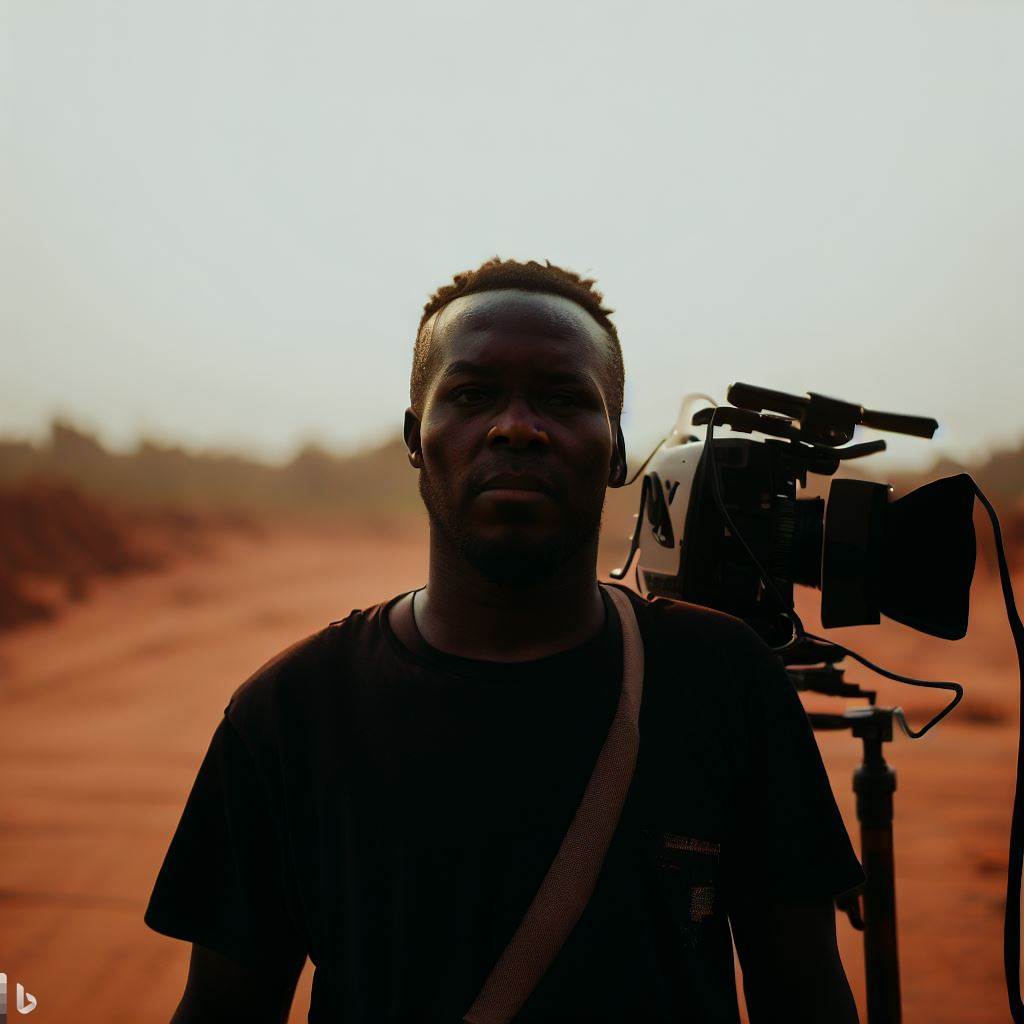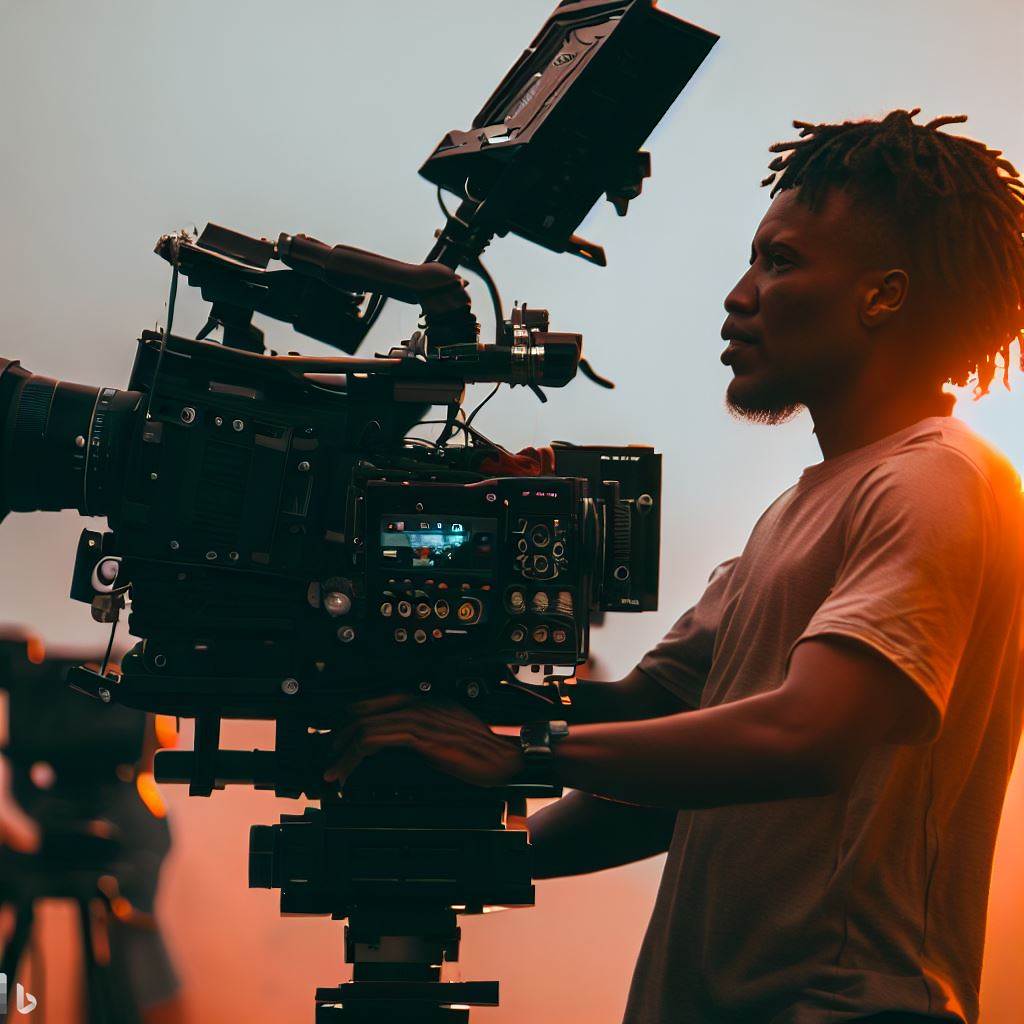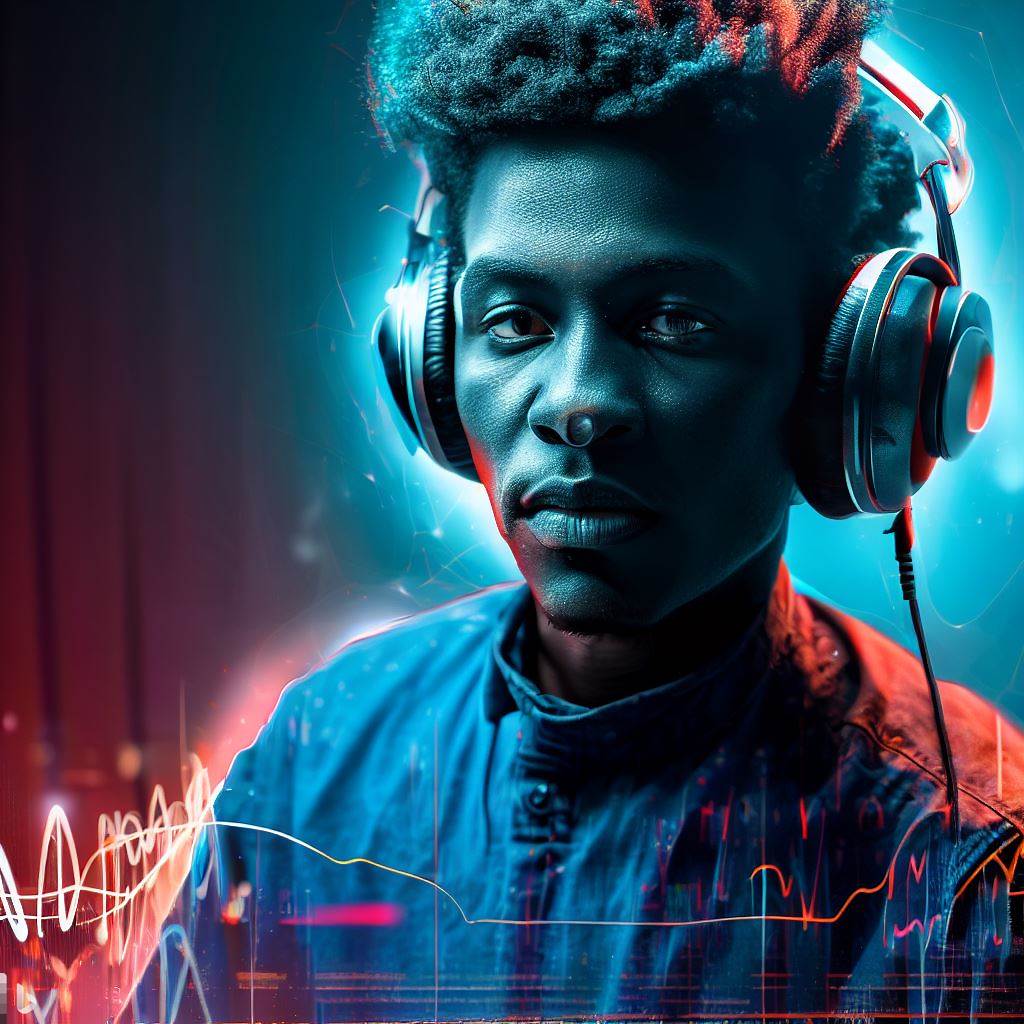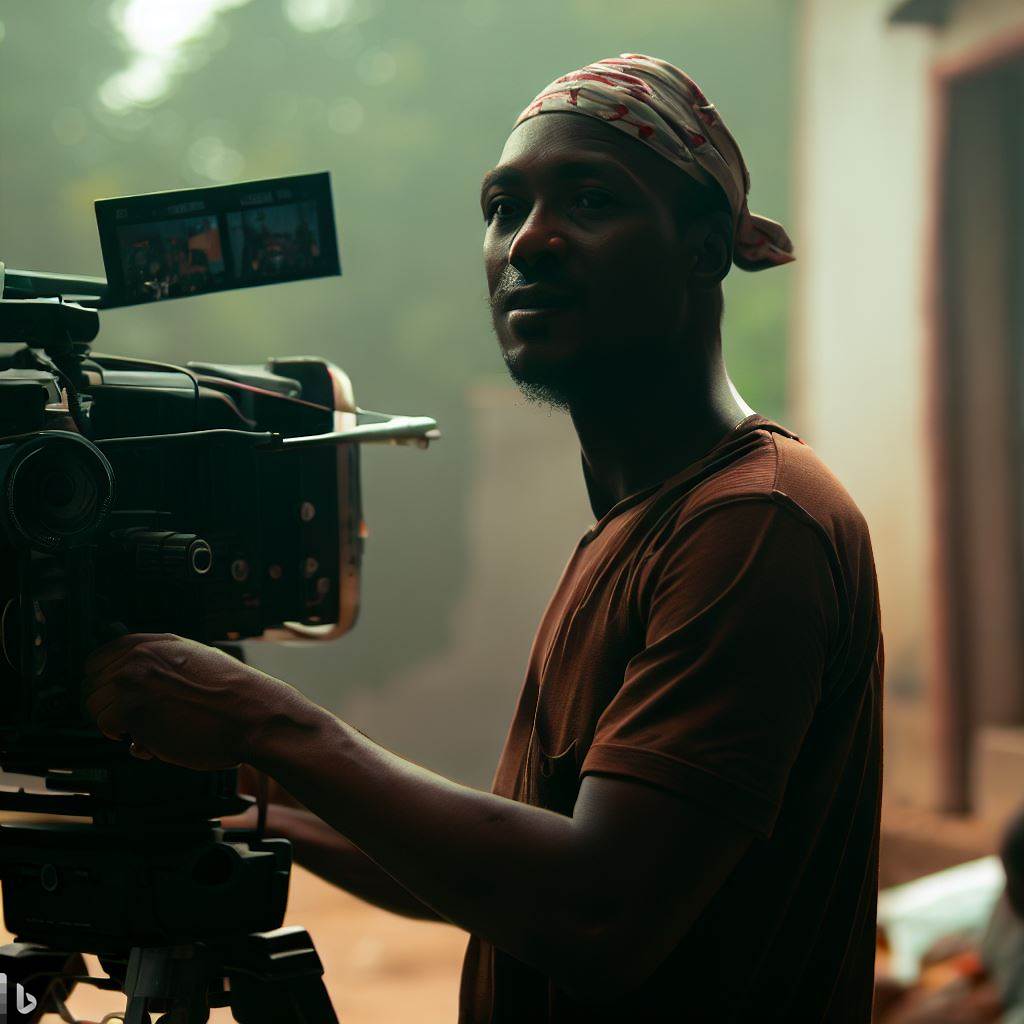Introduction
Nigerian artists are gaining global recognition due to their unique creativity and talent.
The global impact of Nigerian artists is significant and has brought attention to the country’s cultural heritage.
Briefly introduce the topic and its relevance:
- Nigerian artists are captivating the world with their talent, influence, and innovation.
- Their contributions extend beyond music, encompassing art, film, fashion, and more.
- This global recognition signifies Nigeria’s cultural significance and creative prowess.
Provide a thesis statement on the global impact of Nigerian artists
- Nigerian artists, through their creativity, cultural expression, and collaborations, are reshaping global entertainment and art industries.
- Their influence spans music, film, fashion, and visual arts, making Nigeria a cultural powerhouse on the international stage.
- This impact not only promotes Nigerian culture but also opens doors for diverse voices and perspectives worldwide.
Overview of Nigerian Art Scene
History and emergence of Nigerian art
The Nigerian art scene has a rich history and has witnessed significant growth and development over the years.
Nigerian art dates back to ancient times, with the Nok culture being one of the earliest known civilizations in West Africa. These ancient sculptors paved the way for the emergence of contemporary Nigerian artists.
The modern Nigerian art movement can be traced back to the early 20th century when a group of artists known as the “Zaria Rebels” emerged.
Led by art lecturer Uche Okeke, these artists sought to create a distinct Nigerian identity in their artwork, blending traditional African motifs with European modernism.
This movement laid the foundation for the future of Nigerian art.
Nigerian artists are increasingly embracing contemporary art forms, such as painting, sculpture, photography, and installation art.
This fusion of traditional and modern techniques has helped Nigerian artists gain recognition on the global stage.
Nigerian artists have been making waves globally, with numerous exhibitions and recognition both within and outside the African continent.
Many Nigerian artists have gained international acclaim, participating in prestigious art events such as the Venice Biennale and Documenta.
Contemporary Nigerian artists also use their artwork to challenge societal norms and address political issues.
Artists like Njideka Akunyili Crosby and Victor Ehikhamenor explore themes of identity, race, and post-colonialism through their work.
Cultural influences and diversity in Nigerian artwork
Nigerian artwork is characterized by its cultural diversity and the influence of various traditions and customs. Nigeria is a nation with over 250 ethnic groups, each with its unique artistic expressions.
This cultural diversity is evident in the range of techniques, materials, and themes explored by Nigerian artists.
From the intricate wood carvings of the Yoruba people to the vibrant textile designs of the Igbo tribe, Nigerian art reflects the country’s diverse cultural heritage.
Traditional Nigerian art forms such as pottery, sculpture, and mask-making continue to inspire contemporary artists who incorporate these elements into their work.
One of the key cultural influences in Nigerian art is the use of symbolism. Many Nigerian artists use symbols to convey social, political, and spiritual messages in their artwork.
These symbols often reflect Nigerian society’s values, beliefs, and aspirations. Furthermore, globalization has also had a significant impact on the Nigerian art scene.
Additionally, Nigerian music and film industries have also played a crucial role in promoting Nigerian art globally.
Artists such as Burna Boy, Wizkid, and Davido have not only achieved commercial success but have also contributed to showcasing Nigerian culture and artistry to a global audience.
Nigerian art has undoubtedly made significant waves globally. It continues to evolve, adapt, and reinvent itself, representing the diversity and vibrancy of Nigerian culture.
With rising recognition and support, Nigerian artists are poised to continue making their mark on the global art scene.
Read: Navigating the Nigerian Art Scene: A Guide
Rise of Nigerian Artists in the Global Scene
In recent years, Nigerian artists have experienced a surge of international recognition and demand for their artwork.
Increase in international recognition and demand for Nigerian artwork
- Worldwide interest in Nigerian art has grown significantly, leading to higher demand for its artists.
- The multicultural and diverse nature of Nigeria has contributed to the uniqueness and appeal of its art.
- Nigerian art is known for its vibrant colors, intricate patterns, and rich cultural symbolism.
- The global art market has started to acknowledge the immense talent present within Nigeria.
- International art collectors and institutions are actively seeking out Nigerian artists and their works.
- Nigerian art galleries and museums are gaining popularity and attracting global visitors.
- Nigerian artists have been showcased in prominent international art fairs and exhibitions.
- Art critics and curators are also recognizing the exceptional quality and significance of Nigerian art.
- The increasing recognition of Nigerian art has opened up new opportunities for artists to exhibit and sell their work.
- The rise of social media platforms has also helped Nigerian artists reach a global audience and gain visibility.
Notable Nigerian artists making waves globally
- Njideka Akunyili Crosby, a Nigerian-born artist, is celebrated for her unique mix of collage, paint, and drawing.
- Crosby’s work explores themes of cultural hybridity, identity, and her personal experiences as a Nigerian in America.
- Yinka Shonibare, MBE is a British-Nigerian artist known for his use of African textiles and Western classical imagery.
- Shonibare’s work often challenges stereotypes and colonial legacies while exploring themes of post-colonialism and globalization.
- Peju Alatise, a multidisciplinary artist, gained international acclaim through her poetic and thought-provoking installations.
- Alatise’s work addresses societal issues such as gender inequality, religion, and the preservation of Yoruba culture.
- El Anatsui, a sculptor and installation artist, has exhibited his monumental metal sculptures worldwide.
- Anatsui’s works, created from discarded materials, explore themes of African history, identity, and consumerism.
- Kehinde Wiley, known for his distinctive portraits, gained global recognition for his official portrait of President Barack Obama.
- Wiley’s work challenges traditional European depictions of power and portrays marginalized communities with dignity.
In fact, the rise of Nigerian artists in the global scene is evident through the increase in international recognition and demand for their artwork.
The multicultural influences and unique artistic expressions have captivated audiences worldwide.
Notable Nigerian artists making waves globally showcase the diversity and immense talent within Nigeria’s art community.
As the global art market continues to appreciate and embrace Nigerian art, there is no doubt that Nigerian artists will continue to make significant contributions to the global art scene.
Read: Music and Activism: Nigerian Artists’ Role
Exploring Different Artistic Mediums
In this section, we will explore the various artistic mediums through which Nigerian artists are making waves globally.
Contemporary Nigerian painters
- Ben Enwonwu: Known for his iconic painting “Tutu,” Enwonwu gained international recognition and auctioned for $1.68 million.
- Njideka Akunyili Crosby: Combining Nigerian and American influences, Crosby’s works have fetched high prices in global art markets.
- Victor Ehikhamenor: His bold and intricate patterns, influenced by traditional African symbols, have captivated global art enthusiasts.
- Peju Alatise: Alatise’s thought-provoking artwork explores gender inequality and has been showcased in international exhibitions.
- Osaretin Ighile: Ighile’s paintings that depict daily Nigerian life and culture have garnered international acclaim and accolades.
Nigerian Sculptors Gaining Global Recognition
- El Anatsui: His large-scale metal installations made from discarded materials have been exhibited in renowned museums worldwide.
- Ndidi Dike: Dike’s sculptures, often made from wood and clay, reflect Nigerian folklore and ancestral spirituality.
- Sokari Douglas Camp: Camp’s metal sculptures, inspired by Nigerian culture, have been featured in major international exhibitions.
- Yusuf Grillo: Grillo’s bronze sculptures highlight Nigeria’s history and cultural traditions and are highly sought after by collectors.
- Adeola Balogun: Balogun’s sculptures, often using recycled materials, communicate powerful messages about environmental sustainability.
Impact of Nigerian filmmakers in the international movie industry
- Nollywood: The Nigerian movie industry, known as Nollywood, produces the second-largest number of films globally, showcasing Nigerian talent.
- Genevieve Nnaji: Nnaji’s directorial debut with “Lionheart” earned critical acclaim and became Netflix’s first Nigerian original movie.
- Kunle Afolayan: Afolayan’s films, such as “The Figurine” and “October 1,” have received international recognition and awards.
- Tunde Kelani: Kelani’s films, which explore Nigerian culture and traditions, have been screened at prestigious film festivals worldwide.
- Ava DuVernay: While not Nigerian herself, DuVernay’s collaboration with Nigerian filmmakers has helped promote Nigerian stories on a global scale.
In review, Nigerian artists are making significant contributions to the global art scene through various mediums.
Contemporary painters, sculptors, and filmmakers are gaining recognition and putting Nigerian creativity in the spotlight.
Read: Studying Cinematography in Nigeria: Top Schools to Consider
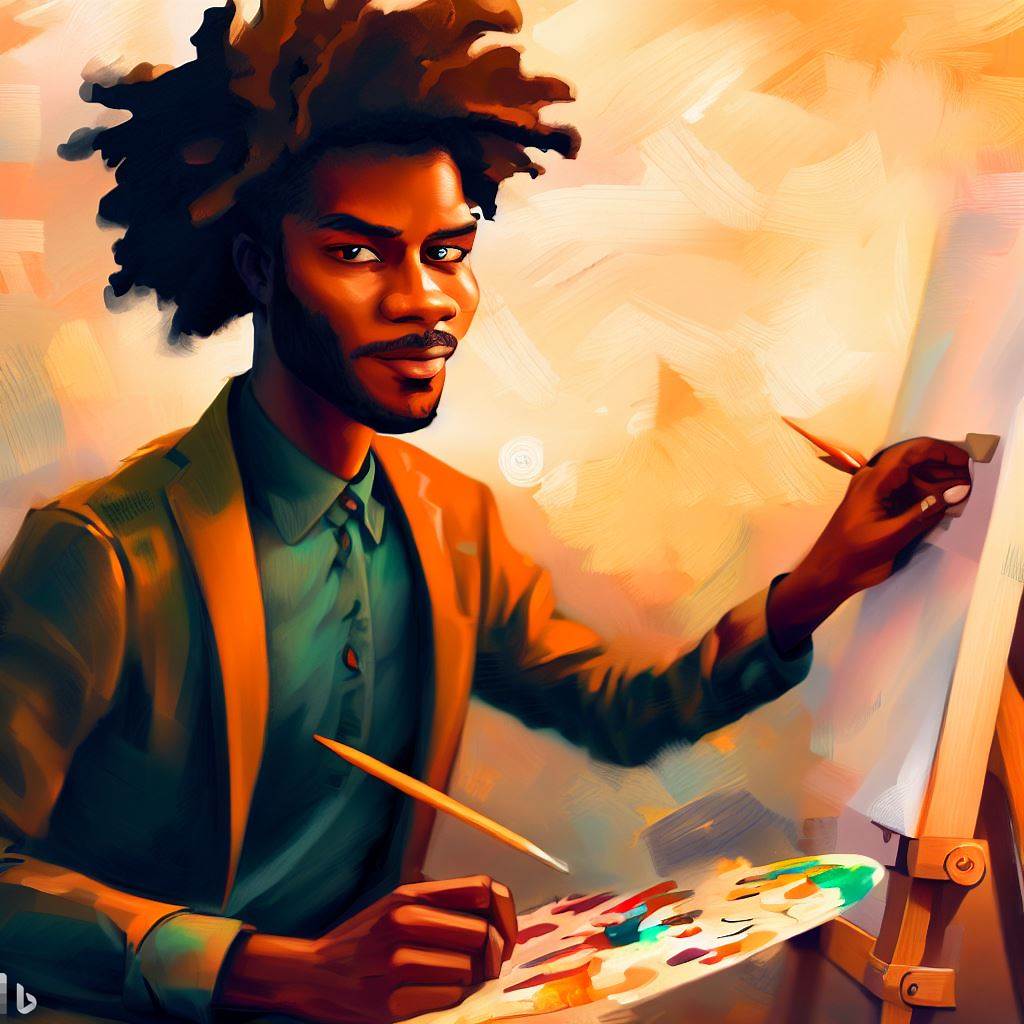
Bridging the Gap: Nigerian Artists and the Diaspora
Nigerian artists in the diaspora achieving success
- Nigerian artists residing outside the country have made significant strides in the global art industry.
- Their unique perspectives and experiences have brought a fresh perspective to the international art scene.
- Artists like Njideka Akunyili Crosby and Toyin Ojih Odutola have received critical acclaim and international recognition for their work.
- Through their art, they challenge stereotypes and provide a voice for Nigerians living abroad.
- These artists use their platforms to address social and political issues, shedding light on Nigerian culture in the diaspora.
Collaborations and exchanges between Nigerian and international artists
- Nigerian artists have embraced collaborations and exchanges with artists from different parts of the world.
- Collaborative projects allow for the blending of diverse artistic styles, creating something entirely new and dynamic.
- Such collaborations open doors to global audiences and provide opportunities for Nigerian artists to showcase their work internationally.
- These partnerships foster cultural exchange, promoting mutual understanding and appreciation among artists.
- Through these collaborations, Nigerian artists contribute to the enrichment of global art movements.
Role of Nigerian art galleries in promoting global exposure
- Nigerian art galleries play a crucial role in promoting and facilitating global exposure for Nigerian artists.
- These galleries provide platforms for artists to exhibit their work both locally and internationally.
- They actively engage with international art communities, facilitating connections and collaborations.
- By showcasing Nigerian art in prestigious international art fairs and exhibitions, they attract global attention to Nigerian talent.
- Nigerian art galleries also provide professional support and representation for artists, helping them navigate the global art market.
In a nutshell, Nigerian artists in the diaspora are achieving great success in the global art scene.
Collaborations and exchanges with international artists contribute to the diversity and richness of Nigerian art.
Nigerian art galleries play a vital role in promoting global exposure for artists by providing platforms and connections.
As Nigerian artists continue to make waves globally, they bridge the gap between cultures and inspire artistic innovation.
Read: The Nigerian Hip Hop Scene: Artists to Watch
Factors Contributing to Global Success
Influence of social media and digital platforms
- The rise of social media has provided Nigerian artists with a global platform to showcase their work.
- Artists can now easily share their creations with people all over the world, gaining recognition and followers.
- Social media platforms like Instagram, Twitter, and Facebook have become virtual galleries for Nigerian artists.
- Through these platforms, artists can directly connect with art enthusiasts, collectors, and galleries.
- They can market their artwork, attract potential buyers, and receive feedback from a diverse global audience.
- Moreover, digital platforms have democratized the art industry, removing barriers to entry for talented Nigerian artists.
- With the power of social media, artists no longer have to rely solely on traditional galleries or exhibitions to gain exposure.
- This accessibility has enabled Nigerian artists to make their mark on the international art scene.
Supportive government policies and investment in the arts
- The Nigerian government has recognized the potential of the creative industry and its contribution to the economy.
- To support Nigerian artists, the government has implemented favorable policies and provided financial backing.
- They have established art institutions, grants, and scholarships to nurture artistic talent in the country.
- Government investment has created opportunities for artists to receive formal training and develop their skills.
- Funding for art exhibitions, festivals, and public art projects has boosted the visibility of Nigerian artists.
- The government’s commitment to the arts has elevated the status of Nigerian art globally.
- These supportive policies and investments have encouraged artists to pursue their passion and achieve international recognition.
International exhibitions and art fairs showcasing Nigerian talent
- Nigerian artists have been gaining significant exposure through international exhibitions and art fairs.
- Events like the Venice Biennale and Art Basel have provided platforms for Nigerian artists to showcase their work.
- These exhibitions draw curators, collectors, and art enthusiasts from around the world.
- Nigerian artists are given the opportunity to display their creativity alongside renowned international artists.
- Being part of such prestigious events not only enhances the reputation of Nigerian artists but also opens doors to global collaborations.
- International exhibitions and art fairs have played a crucial role in establishing Nigerian artists on the international stage.
In general, Nigerian artists have made significant strides in the global art scene due to various factors.
The influence of social media and digital platforms has allowed Nigerian artists to reach a wider audience, connect with potential buyers, and gain international recognition.
Supportive government policies and investments in the arts have provided artists with resources, training, and funding, enabling them to flourish.
Additionally, international exhibitions and art fairs have showcased the talent of Nigerian artists to a global audience, establishing their presence on the international art stage.
These factors combined have played a vital role in the global success of Nigerian artists and continue to propel their artistic careers forward.
Challenges and Opportunities for Nigerian Artists
Socio-economic obstacles faced by artists in Nigeria
- Limited access to funding and financial resources for artists to support their creative pursuits.
- Inadequate recognition and support from the government and society towards the arts as a viable career.
- Lack of affordable spaces and studios for artists to work and exhibit their artworks.
- Poor copyright protection and the prevalence of art piracy in Nigeria.
- The absence of a structured art market and the dominance of foreign art influences.
Importance of education and infrastructure development
Education is pivotal in the journey of Nigerian artists. Formal art education equips them with essential skills and nurtures their creativity.
However, there’s room for improvement in the education sector. Investment in art schools and curricula enhancements can further empower emerging talents.
Infrastructure development also plays a crucial role. Adequate studios, exhibition spaces, and galleries are essential for artists to flourish.
Moreover, digital infrastructure is increasingly vital. Access to high-speed internet and e-commerce platforms can help artists reach global audiences.
Government initiatives promoting cultural development are promising. These can provide the necessary infrastructure and support for artists to thrive.
Potential for growth and further international recognition
Despite these challenges, Nigerian artists possess immense potential for growth and international recognition.
Their rich cultural heritage offers a unique perspective that resonates with global audiences. This diversity sets them apart in the art world.
Networking and collaboration opportunities are expanding. International partnerships can expose Nigerian artists to new markets and ideas.
Furthermore, social media and digital platforms have leveled the playing field. Artists can showcase their work to a global audience with minimal cost.
International recognition brings economic benefits. Nigerian art can attract collectors and investors, injecting much-needed funds into the sector.
In recent years, Nigerian artists like Burna Boy, Wizkid, and Ngozi Okonjo-Iweala have gained global acclaim. Their success serves as inspiration for others.
Basically, Nigerian artists face numerous challenges, including limited resources, lack of infrastructure, and societal attitudes.
However, with the right investments, education, and infrastructure development, there is great potential for Nigerian artists to grow and gain further international recognition.
It is crucial to address these challenges and provide opportunities for Nigerian artists to thrive and contribute to the global art scene.
Conclusion
Nigerian artists are making waves globally through their exceptional talent and creativity. They have had a significant impact on the global art scene, gaining recognition and accolades.
It is important to recognize and support Nigerian artists, as they have immense potential to continue thriving globally.
Throughout this blog post, we have explored the remarkable achievements and contributions of Nigerian artists in the global art scene.
From painters to sculptors, these talented individuals have made a name for themselves and their country on a global scale.
Nigerian artists have been able to break barriers and reach new heights, thanks to their unique style and innovative approach to art.
Through their work, they have captured the attention of art enthusiasts and collectors from around the world.
The impact of Nigerian artists extends beyond the art world. Their success has helped put Nigeria on the map and has challenged preconceived notions about African art.
They have proven that artistic excellence can be found in every corner of the world.
It is crucial to support and celebrate Nigerian artwork. By doing so, we not only uplift the artists themselves but also showcase the richness and diversity of Nigerian culture.
Through their art, these individuals are telling stories, sparking conversations, and promoting understanding between different cultures.
Let us continue to recognize and celebrate Nigerian artists and their remarkable achievements.
Whether by attending their exhibitions, purchasing their art, or simply sharing their work, we can all play a part in furthering their global impact and acknowledging their immense talent.

